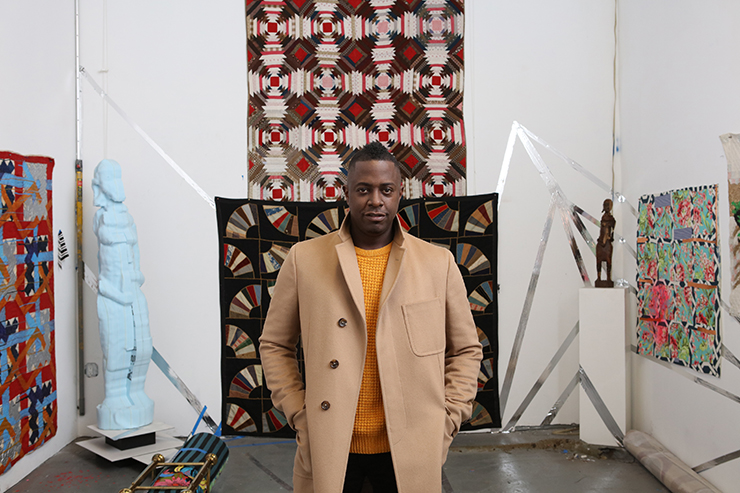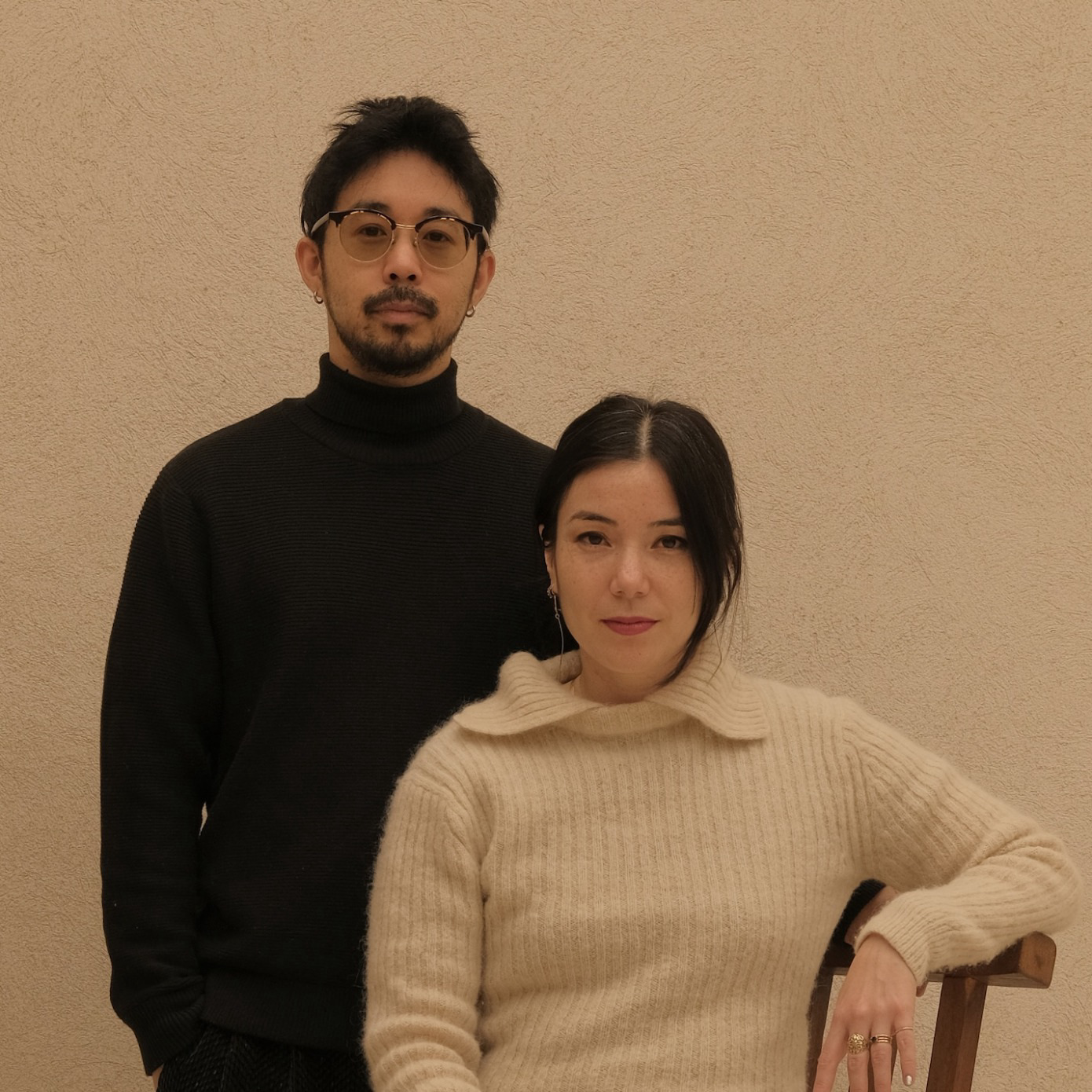
From the second level of Sanford Biggers’ lofted Harlem studio, a bird’s-eye view reveals a tiny slice of the interdisciplinary artist’s both recent and ongoing projects. Folkloric, patchwork quilts hang from the walls, while in-process decoupage fabrics lay stacked on tables. A totem-like statue stoically presides from a corner of the room, its silhouette reminiscent of a standing pharaonic sculpture. The items themselves are comfortingly familiar, vaguely domestic and even beautiful, but like Biggers’ larger canon of work, provocatively disturbing upon closer examination.
“My work is a platform,” the artist says. “I am not trying to be overly didactic and instead take a nuanced and layered approach. One of those layers has to do with social justice and re-righting history.” By “re-righting” Biggers hopes to address the racial inequity that he contends America refuses to address. “The entirety of my career has been devoted to touching on aspects of African-American history and culture that aren’t necessarily well known facts—instances that we don’t talk about because America is in a state of racial denial,” he says.
Biggers tackles this fraught subject matter with a brilliant, deceptive quietness, manipulating found objects to reveal the dark corners and complexity of African-American and American history. In his quilt series, Codex, Biggers collects pre-1900 African-American-owned quilts that tell a “vernacular history.” Many historians believe that quilts were used as signposts for slaves escaping to the north in the Underground Railroad, indicating safe houses, directions and danger. The finished piece currently hanging in his studio distinctly shows the outline of a slain body but with glitter, oil stick, acrylic paint and tar in lieu of white chalk, recalling endemic police violence against black men. “I like to think of myself as a late collaborator in the making of the quilts. I am coming into it 100 or more years later, with reverence, and adding a new story to it.”

His recently debuted BAM series, in which he repurposes African wood figurines, directly speaks to the rash of police brutality against black men and women, the Black Lives Matter movement and the media’s delayed attention to the ongoing, violent epidemic. After dipping the sculptures in wax, he pelts them with bullets in a shooting range before casting them in bronze. In naming them after recent victims who have been in the media’s eye—Sandra, Michael, Trayvon—Biggers demonstrates the infamy of these instances in the viewer’s immediate recognition of a first name paired with a bullet-riddled figure. The BAM sculptures fuse stoic serenity with gut-wrenching violence. It is a masterful display of what Biggers does best: eschewing a heavy-handed message in favor of masking the horrific in something beautiful, compelling and confusing. “I’m not making protest posters,” he says. “The BAM series became a way to see the consistency of the events. These killings have been going on for 500 years—it’s a continuum of dysfunction.”

Biggers deftly navigates between mediums to best narrate his point, like a polyglot plucking phrases from various languages to communicate with nuance. During this studio visit, he was preparing for the first dress rehearsal of an adaptation of L’Amant Anonyme, the opera by Chevalier de Saint-Georges, directed by Philip Shneidman. Saint-Georges, born to a French plantation owner and an African slave, rose to prominence as a fencer and musician prior to the French Revolution. Biggers was brought on to handle the art direction and costumes, which he bills as a conflagration of “mystical capes and drapes and scarves and cowls inspired by West African Sufis, mixed with a little bit of Versailles rococo.”
While Biggers alternates between materials, he is quick to point out that he does, in fact, have a binding medium. “The material I like the most is history, as opposed to any physical material,” he says. “Artists have a unique platform. We can present information that is conjecture or subjective, but it can promote dialogue, make people look at what is happening and, most importantly, question what is being served to them.”





